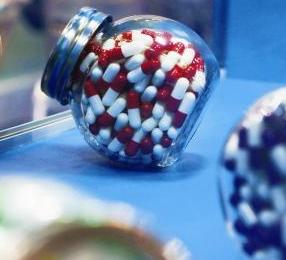
On the morning of the 14th, the State Food and Drug Administration issued the "Annual Report on the Monitoring of Adverse Drug Reactions in the Country (2013)" (hereinafter referred to as the "Report"). Among them, many drugs that are very familiar to everyone are listed in the list: Biyankang tablets, Shuanghuanglian mixture, Liuwei Dihuang Wan, Huanglian Shangqing pills, etc.
The number of reported anti-infective drugs such as penicillin ranks first
According to the report, in 2013, the national adverse drug reaction monitoring network received a total of 1.317 million reports of adverse drug reactions/incidents, an increase of 9.0% over 2012. Among them, chemical drugs accounted for 81.3%, Chinese medicine accounted for 17.3%, and biological products accounted for 1.4%. Anti-infective drugs reported 517,000 cases of anti-infective drugs, the number still ranked first, accounting for 47.6% of chemical drugs, but decreased by 1.2 percentage points compared with 2012, the reporting ratio has been showing a downward trend for four consecutive years.
According to report data, from the analysis of pharmaceutical dosage forms, in the anti-infective drug adverse events/events report in 2013, injections accounted for 74.3%, oral preparations accounted for 23.2%, and other dosage forms accounted for 2.5%. The proportion of injections in anti-infective drugs was 14.5 percentage points higher than that in the overall report.
The number of adverse reactions/incidents of anti-infective drugs has always ranked first among all kinds of drugs, and it is the focus of national monitoring of adverse drug reactions. In recent years, the proportion of adverse reactions reported for anti-infective drugs has continued to decline slightly, but cephalosporins, penicillins, and quinolones have caused adverse reactions such as drug allergy, combined with large clinical doses and irrational drug use. The number of reports of adverse reactions remained high.
The phenomenon of combined use of traditional Chinese medicine injections highlights
In 2013, the National Adverse Drug Reaction Monitoring Network received a total of 121,000 reports of Chinese medicine injections, of which serious reports accounted for 5.6%. Compared with 2012, the number of Chinese medicine injections reported increased by 17.0%, which was higher than the growth rate of the overall report; the number of serious reports increased by 22.3%, which was basically the same as the overall serious report growth rate.
The report pointed out that the phenomenon of joint use of Chinese medicine injections with other drugs still exists, which may increase safety risks and should be used clinically with caution. The “Annual Report on Monitoring of Adverse Drug Reactions in 2011†issued by the State Food and Drug Administration reminds that the combined use of drugs may increase the safety risk of Chinese medicine injections. However, from the data analysis of the adverse drug reaction reports of Chinese medicine injections in 2013, the phenomenon of combined drug use has not been effectively alleviated.
In addition, in 2013, a total of 530,000 adverse drug reactions/events were reported to the national essential drugs, of which 26,000 were serious reports, accounting for 4.9%. In the report, the top five chemicals and biological products reported were all anti-microbial drugs, namely levofloxacin, ceftriaxone, cefuroxime, penicillin and cefazolin. The top five Chinese medicine injections include Qingkailing injection and Shenmai injection; the top five oral preparations of proprietary Chinese medicines include compound Danshen tablets, Liuwei Dihuang Wan and Huanglian Shangqing pills.
Elderly drug adverse reactions climbed for 4 years
The report specifically pointed out that the elderly over 65 years of age accounted for 17.8% of adverse reactions, which was an increase of 1.4% compared with 2012. This is the ratio that has been reported for 4 consecutive years showing a slight upward trend since 2009. In the report of serious adverse reactions to some drugs, the proportion of elderly patients is also larger. For example, in the treatment of gout drug allopurinol tablets, elderly patients over the age of 65 accounted for 45.1% of the total cases of severe cases.
According to the analysis of the report, the elderly are in a state of physical and psychological decline, which brings hidden dangers to the use of drugs.
The State Food and Drug Administration pointed out that the number of reported adverse drug reactions and the incidence of adverse drug reactions are two completely different concepts. The increase in the number of reported adverse drug reactions precisely reflects our increased ability and level of control over drug safety. The number of adverse drug reactions/event reports for each drug is affected by many factors such as the amount of the drug used and the incidence of adverse reactions of the drug. Therefore, the ranking of the number of adverse drug reactions/event reports is only a direct reflection of how much data is reported. Represents the incidence of adverse reactions.
Melatonin Capsules,Melatonin Soft Capsule,Rhodiola Capsules,Folic Acid Powder
Xi'an complex bio-tech CO.,LTD. , https://www.complexpowder.com